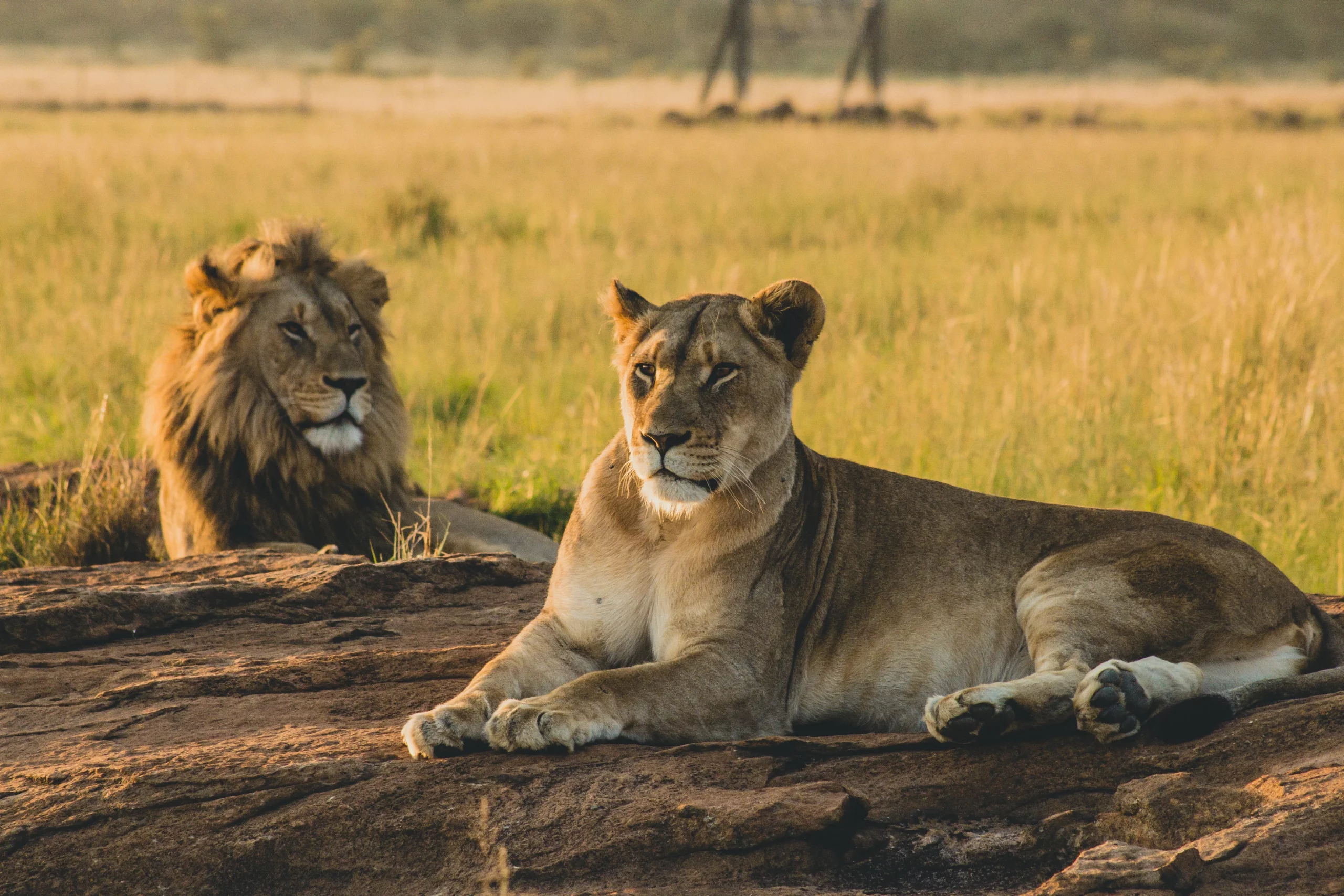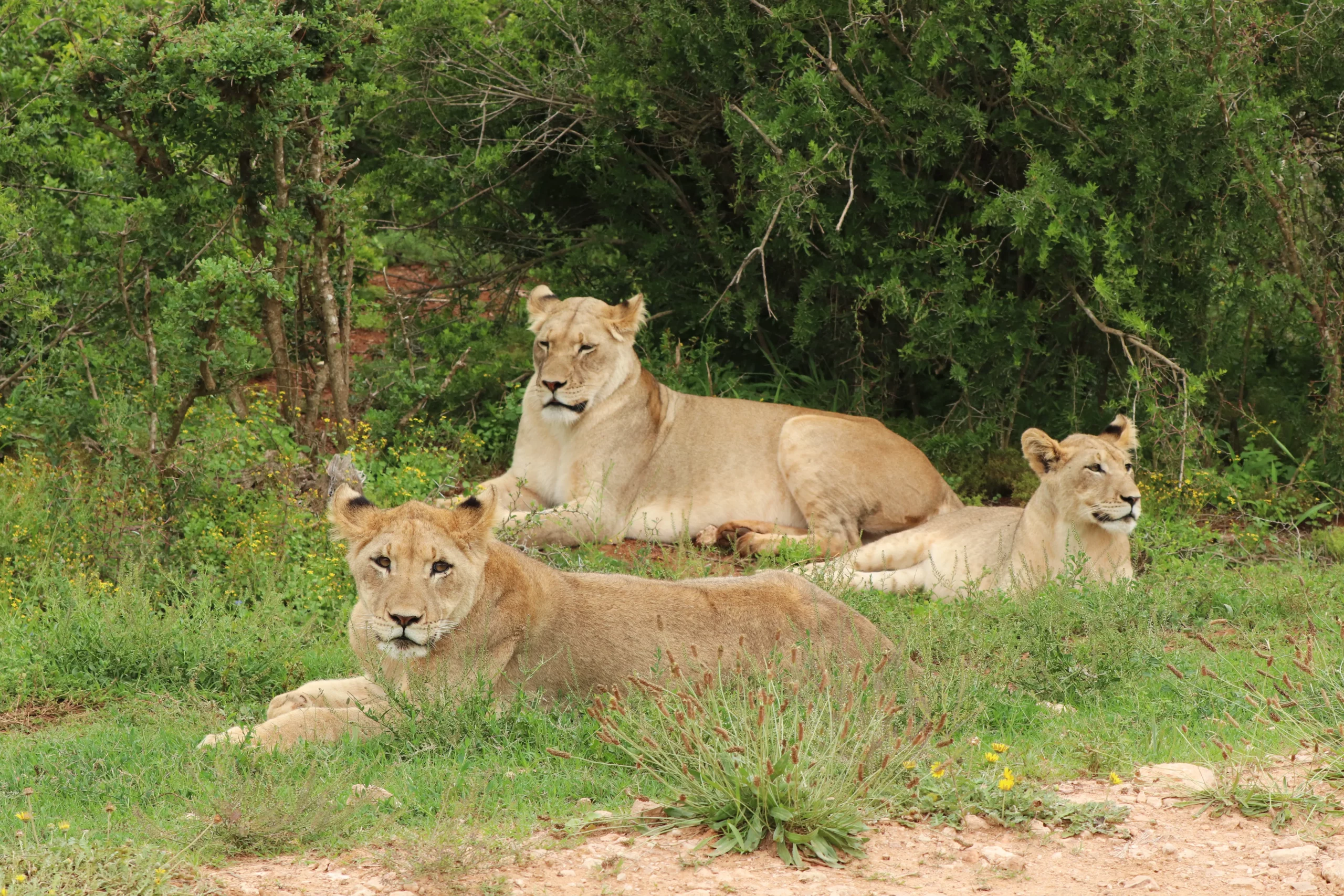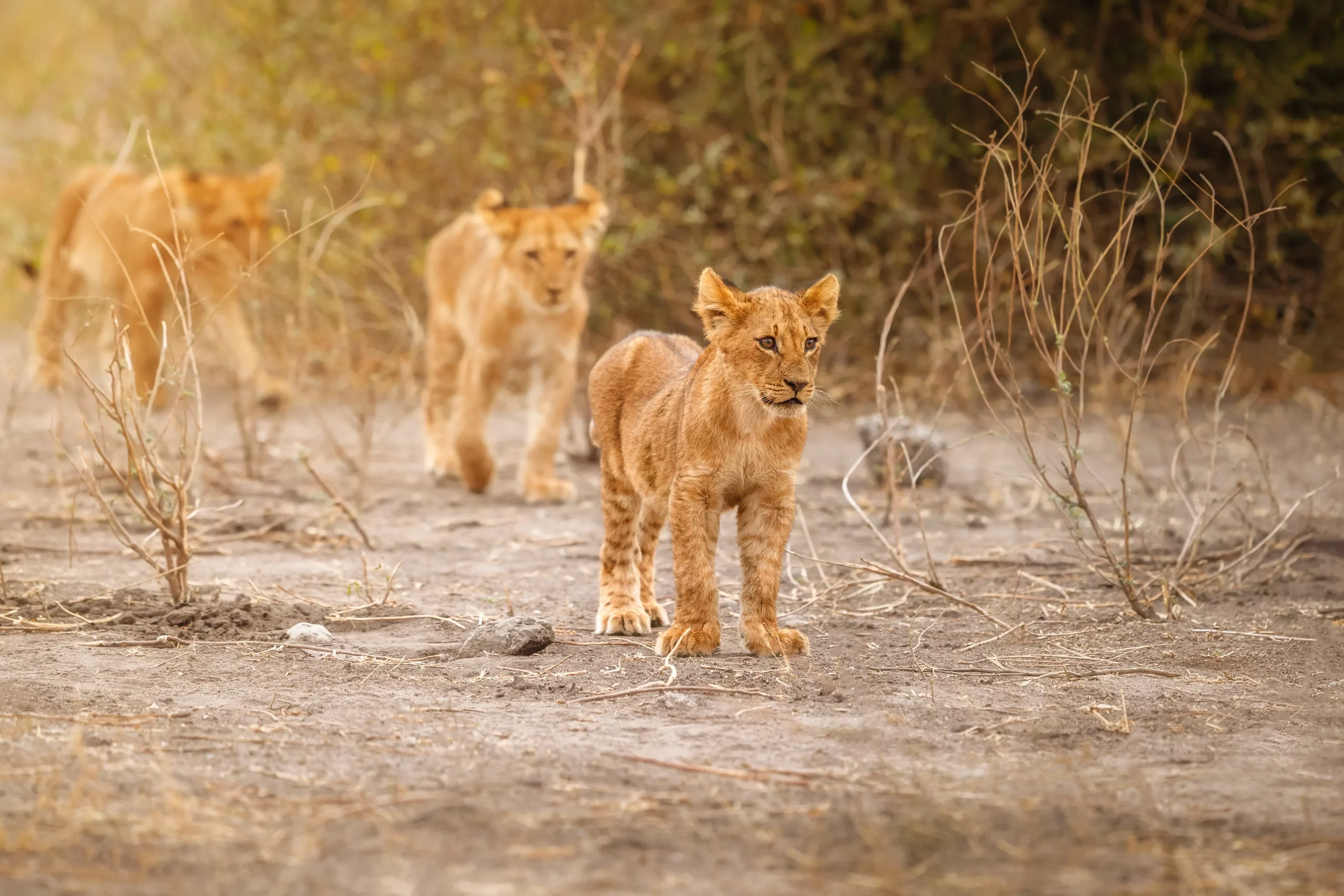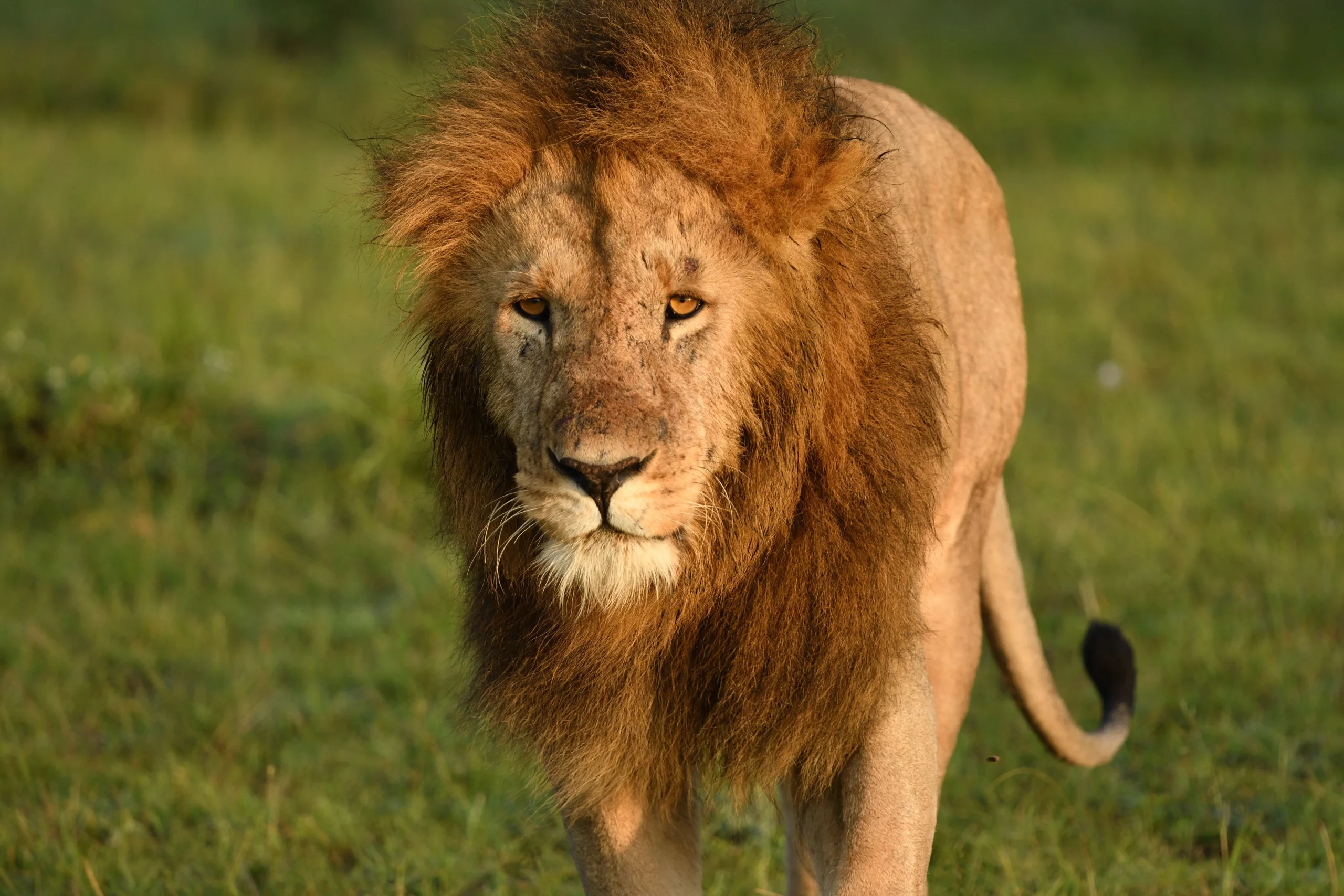
Lions in Masai Mara
Among all the Big Cats in the Masai Mara, the Lion stands out, inspiring awe and admiration. Known as the “King of the Jungle,” it is the largest of Africa’s big cats. In Kenya, you can witness these magnificent creatures during a wildlife safari in the Masai Mara Game Reserve, or by visiting some of Kenya’s National Parks and Reserves. It is estimated that there are around 850 to 900 lions in the Masai Mara National Reserve and its surrounding conservancies. See our Masai Mara Packages.

Lions are the most social animals among the big cats. They live in groups called prides, which usually consist of 15 to 20 members. This includes up to three adult males, several adult females with one being dominant, and a mix of sub-adults and cubs. In the Maasai Mara, a male lion’s territory can range from 20 to 400 square kilometers, and within this area, there are several prides of female lions. Female lions are primarily responsible for hunting, although the males often assist in capturing larger prey. They typically hunt animals like wildebeest and zebras, but outside of the annual migration, they also target other animals such as buffalo and warthogs. Due to their high metabolism, Masai Mara lions sleep for about 20 hours a day, and they often hunt at night.

The female lions have an estrus cycle that lasts about four days. During this time, they mate frequently, with each session lasting around 20 seconds. However, only about one in five cycles results in the birth of cubs. On average, a female lion will give birth to up to three cubs after a gestation period of three and a half months. Male cubs leave the pride when they are between two and three and a half years old, while female cubs often remain with the pride indefinitely. Lion cubs are weaned by the time they are seven to eight months old and are nursed by any lioness in the pride. Lions typically live for about 14 to 20 years.

Lion cubs are initially born with captivating blue eyes, which gradually transform to a warm amber or brown hue when they reach about two to three months old.

Lions are fascinating creatures with some of the most complex ways of communicating among big cats. They can produce a wide range of sounds, such as roars, grunts, moans, growls, snarls, meows, purrs, hums, puffs, and woofs. Known for being the loudest of the big cats, a lion’s roar can be heard up to 8 kilometers away! Lions roar for various reasons, like marking their territory, scaring off rivals, finding other pride members, and keeping the group together. Interestingly, female lions can tell the difference between the roar of a familiar male in their pride and a stranger’s roar. This ability helps them protect their cubs by keeping a safe distance from outsiders who might pose a threat.
